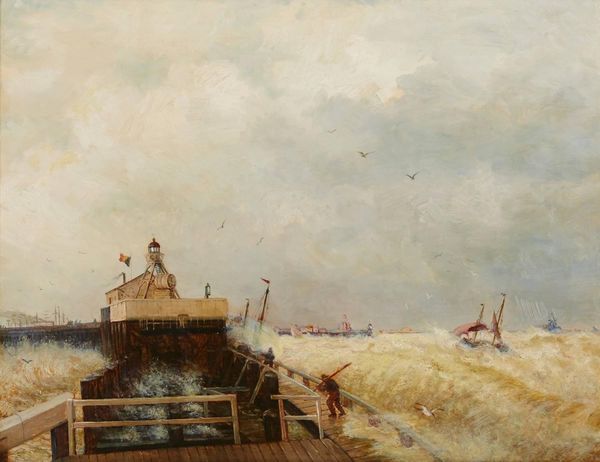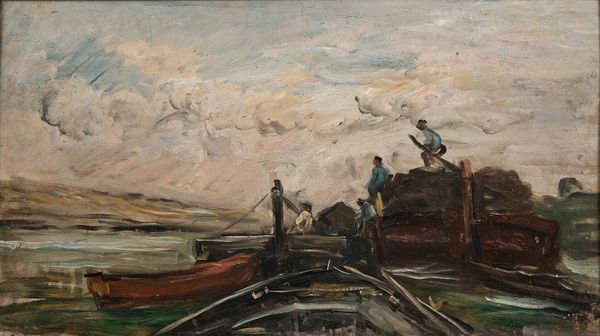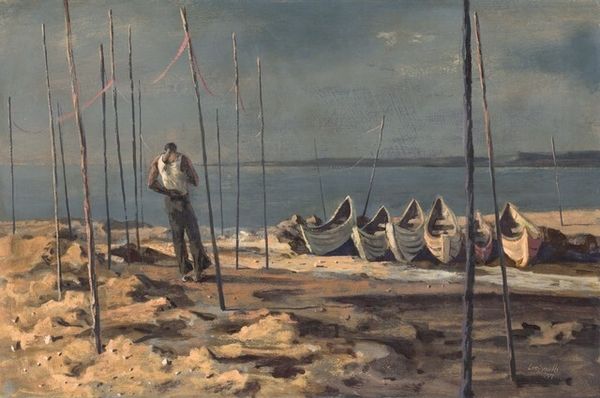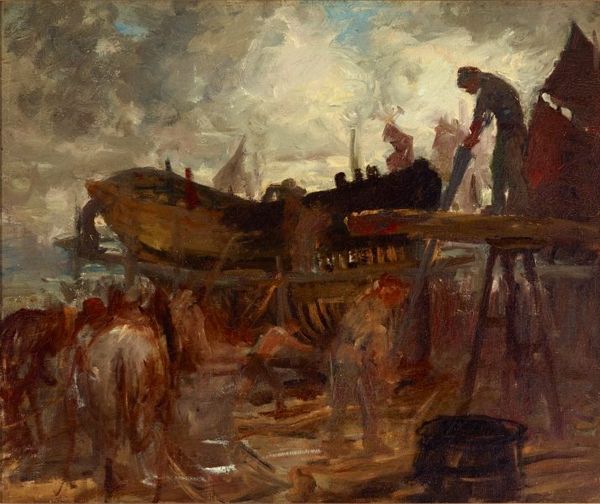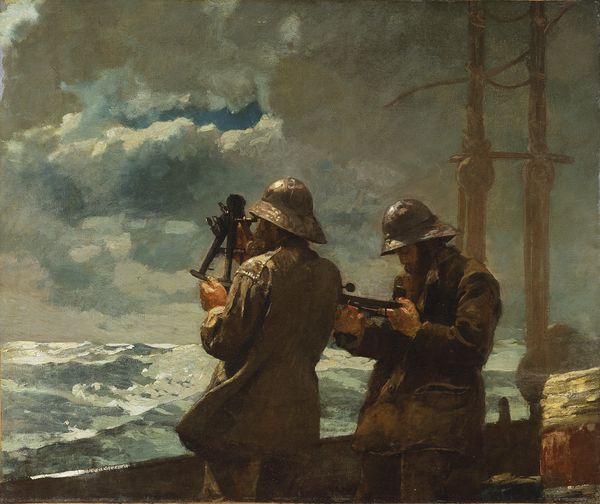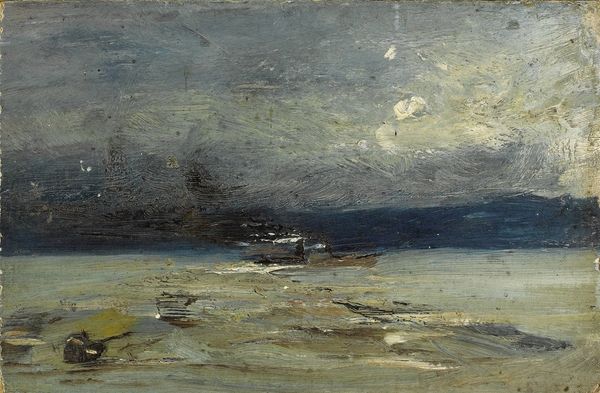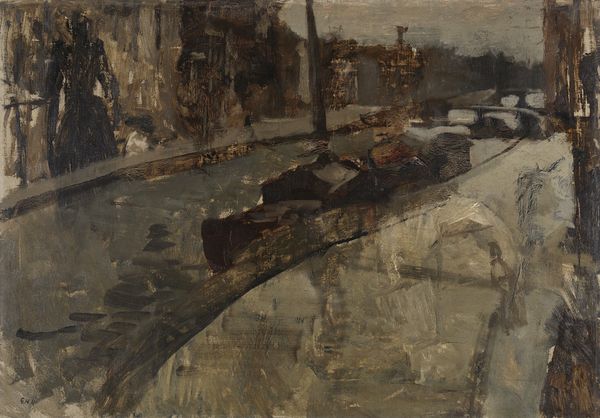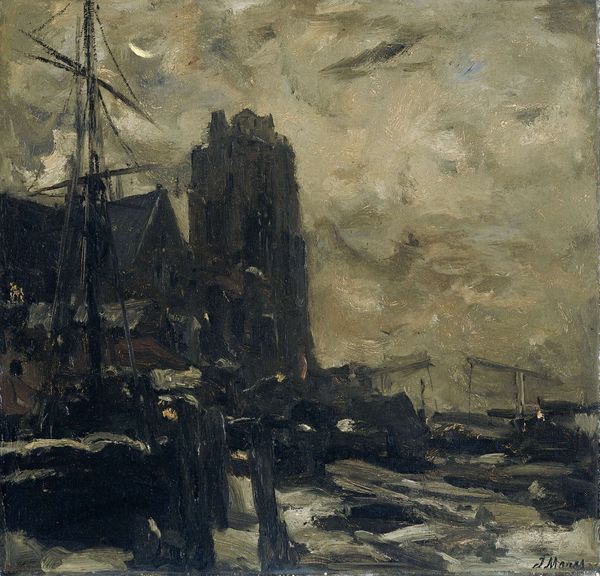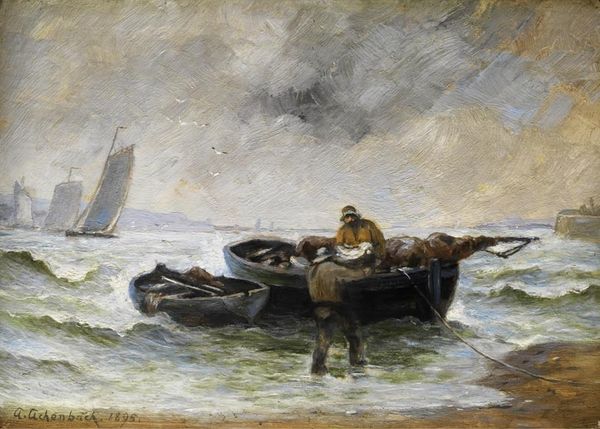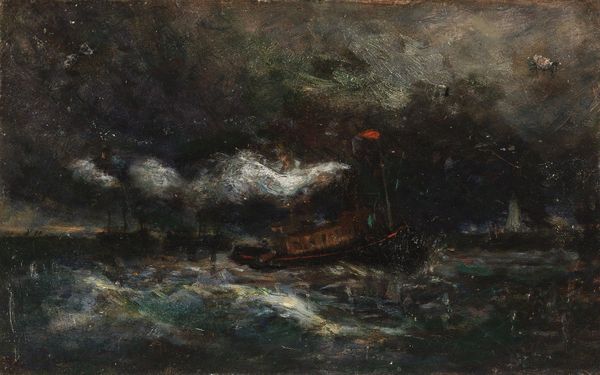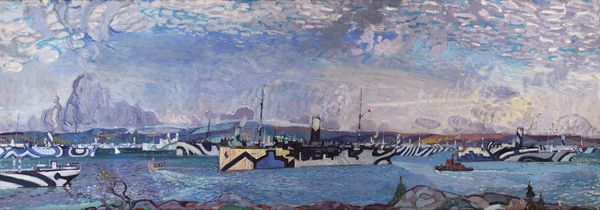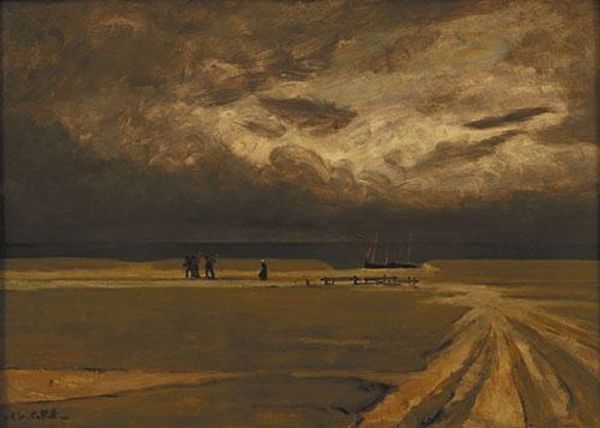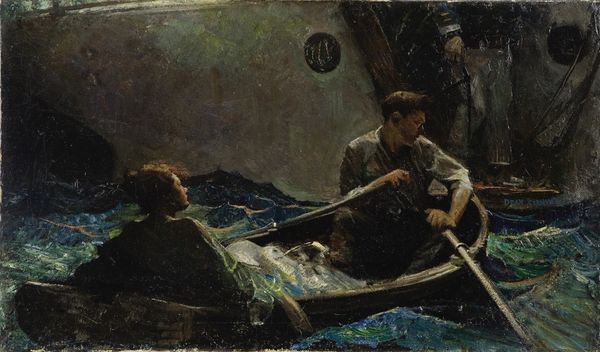
Copyright: Public domain
Curator: Jacques-Émile Blanche's "On the Pier at Dieppe," completed in 1938, presents us with a somber scene rendered in oil paint. Editor: My immediate sense is of a blustery, grey day; a melancholic mood permeates the whole composition. Curator: The pier serves as a site of labor, of leisure, and also as a vantage point to the sea, with many nuanced interactions unfolding among social classes at this place, and I wonder about the socio-political currents impacting life at the time. The painting also comes toward the end of Blanche’s career when he made more frequent returns to the themes and style of impressionism. Editor: The rough brushstrokes give it that very tangible quality, and the light itself seems thick. The materials employed really emphasize the daily labor depicted. Are these workers or perhaps local fisherman and what did that pier itself signify in the network of trade? Curator: That question is quite appropriate given that Dieppe itself played a key role in maritime history and commerce, connecting France and England. Given that landscape art and portraiture were central to Blanche’s work, there seems to be a unique conflation of each in the people he has portrayed here, both literally in their arrangement within the land, as well as being tethered to the historical representation. Editor: Exactly. It also is fascinating that although it seems like plein-air work, everything leads the viewer's eye towards an industrial scene. The materiality here is also vital in deciphering the story as this contrasts with what was being created by machines, such as fishing trawlers. Curator: What do you see as most striking about the workers featured in this artwork, both in terms of production and political voice? Editor: Perhaps a sense of unfulfilled promise within the network of production. There seems to be a longing gaze away, to find a way for them to fully embrace their voices, but within an industrial economy, they cannot see or feel an output in what they do, despite contributing with their physical, manual actions. Curator: Indeed. Understanding the nuances that define their presence allows us to move toward equity, agency and voice, which the piece seems to offer when studying it closely. Editor: I find the sheer physicality and immediacy of the piece deeply affecting. It’s like witnessing the elements bearing down. Curator: Well, considering this from both your and my perspectives allows us to be better equipped in our next encounter!
Comments
No comments
Be the first to comment and join the conversation on the ultimate creative platform.
